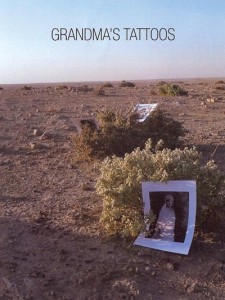Tatevik Hovhannisyan
Staff Writer
 When one hears about the Armenian Genocide, one often hears about the death marches and the killing of the Armenian leadership on April 24. Rarely do we hear what happened to the women who were “saved.” One movie, Grandma’s Tatoos, explored this topic at a screening on Wednesday, February 29, at Fresno State.
When one hears about the Armenian Genocide, one often hears about the death marches and the killing of the Armenian leadership on April 24. Rarely do we hear what happened to the women who were “saved.” One movie, Grandma’s Tatoos, explored this topic at a screening on Wednesday, February 29, at Fresno State.
The Armenian Studies Program co-sponsored the Fresno premiere of Grandma’s Tattoo’s with the Armenian National Committee, Central Valley.
Directed by Suzanne Khardalian, the 58-minute documentary explores Grandmother Khanoum’s horrifying past—one that she never wanted to share with any of her children or grandchildren, because she was ashamed of her experiences.
The movie follows the director, Suzanne Khardalian, as she embarks on a journey to better understand her grandmother and to find out what prevented her grandmother from expressing love and affection to her family. Khardalian first visits her family home in Beirut, where her grandmother had settled as a refugee. She wanted to find out what the “devilish-marks” on her grandmother’s face and hands meant. Realizing that nobody there could answer her questions, she traveled to the United States to find out more from her grandmother’s sister. After hearing shocking and tragic stories about her grandmother’s childhood, Khardalian traveled to Armenia to interview a survivor of the Genocide, who could tell her stories of what happened to the young girls who survived the Armenian Genocide.
Khardalian learned that the Ottoman Empire killed most of the Armenian male population during the Genocide, leaving the women miserable and helpless. As the death marches started, Turkish gendarmes took more than 90,000 children, mostly young girls, converted them to Islam, and forced some of them into prostitution. In order to remind the young girls of their past, the Turks tattooed their faces, chests, and foreheads. The tattoos were meant to distinguish them from the locals.
Khardalian later discovered that her grandmother had been raped when she was a young girl, which was why she was always filled with so much anger and rarely showed love towards her family.
Although the movie was sad and heart wrenching, it was an effective movie because it depicted the pain that women had to endure during and after the Genocide.
“It really opened my eyes to the pain that the women and children faced,” reflected Denise Altounian.
The survivors who are ashamed to talk need to speak up and to share their story so that people around the world know what happened to them.
 Hye Sharzhoom Armenian Action
Hye Sharzhoom Armenian Action